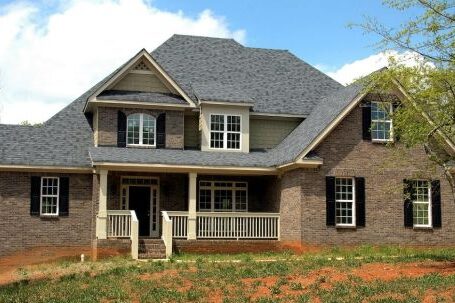In today’s world, where environmental sustainability is a pressing concern, making your home energy-efficient is not only good for the planet but also for your wallet. By implementing a few key upgrades, you can significantly reduce your energy consumption and lower your utility bills. In this article, we will explore five essential upgrades that will transform your home into an energy-efficient haven.
1. Insulation: The Foundation of Energy Efficiency
Proper insulation is crucial for maintaining a comfortable indoor temperature and minimizing heat loss or gain. By insulating your home’s walls, roof, and floors, you can prevent warm air from escaping during winter and cold air from seeping in during summer. This will create a more consistent and energy-efficient environment, reducing the need for excessive heating or cooling.
2. Energy-efficient Windows and Doors
Old, drafty windows and doors are major culprits for energy loss. Upgrading to energy-efficient windows and doors with double or triple glazing can minimize heat transfer and significantly improve insulation. Look for windows and doors with low emissivity (low-E) coatings that reflect heat back into the room, keeping it warmer in winter and cooler in summer. Additionally, consider installing weatherstripping or draft excluders to seal any gaps around windows and doors, further enhancing energy efficiency.
3. LED Lighting: Brighten Up with Efficiency
Traditional incandescent light bulbs are not only inefficient but also have a shorter lifespan. By switching to energy-efficient LED (Light Emitting Diode) lighting, you can reduce your electricity consumption by up to 80%. LED bulbs are not only long-lasting but also emit less heat, making them safer and more cost-effective. Furthermore, LED lights are available in various colors and designs, allowing you to create the perfect ambiance while saving energy.
4. Smart Thermostats: Optimize Temperature Control
Heating and cooling account for a significant portion of a home’s energy usage. By installing a smart thermostat, you can optimize temperature control and reduce energy waste. Smart thermostats learn your behavior and adjust the temperature accordingly, ensuring comfort when you need it and conserving energy when you don’t. Additionally, you can control your thermostat remotely through a smartphone app, allowing you to adjust settings even when you’re away from home.
5. Renewable Energy: Harnessing the Power of the Sun
Harnessing renewable energy sources is an excellent way to make your home energy-efficient and reduce your reliance on fossil fuels. Installing solar panels on your roof allows you to generate your own clean energy and potentially even sell excess energy back to the grid. The initial investment may seem significant, but with government incentives and long-term savings on energy bills, solar power is a financially viable and environmentally friendly choice.
In conclusion, making your home energy-efficient is not only beneficial for the environment but also for your budget. By implementing these five essential upgrades – insulation, energy-efficient windows and doors, LED lighting, smart thermostats, and renewable energy – you can significantly reduce your energy consumption and make a positive impact. So why wait? Start transforming your home into an energy-efficient haven today and enjoy the benefits for years to come.





